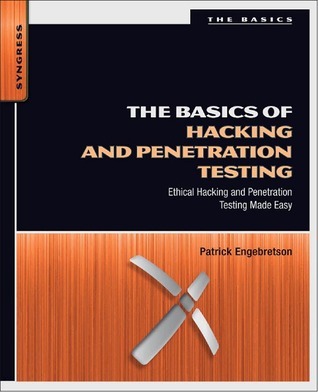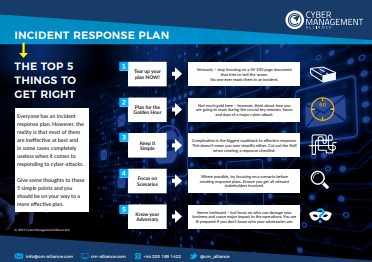From Prop Hunt Prodigy to Pen Tester: How Garry's Mod Prepared Me for a Career in Cybersecurity I recently bypassed multi-factor authentication on a high-profile client's internal network, not by exploiting some zero-day vulnerability, but by convincing their receptionist that I was the new IT guy sent to install a critical security update.

I recently bypassed multi-factor authentication on a high-profile client's internal network, not by exploiting some zero-day vulnerability, but by convincing their receptionist that I was the new IT guy sent to install a critical security update. The key? Acting like I belonged, knowing the right buzzwords, and a carefully crafted story that, while complete fabrication, sounded just plausible enough. Sounds a bit like hiding as a filing cabinet in plain sight, doesn't it? You might be surprised to learn that my path to cybersecurity consultancy wasn't paved with CompTIA certifications or advanced degrees – it was forged in the chaotic, hilarious world of Garry's Mod, specifically the deceptively strategic game mode, Prop Hunt. The skills I honed frantically trying to blend into a virtual environment – observation, spatial awareness, deception, and quick thinking – have proven surprisingly valuable in my career as a penetration tester.
Observation: The Art of Blending In
One of the core mechanics of Prop Hunt is the ability to transform into everyday objects and hide within the environment. The better you blend, the longer you survive. This requires acute observation. Take the classic map, cs_office. Before even thinking about becoming a prop, you had to scan the entire office. What should be there? Desks, chairs, monitors, maybe a water cooler. What definitely shouldn't be there? A bouncy castle in the break room (tempting as it may be). The mental checklist I'd run through before choosing a prop was exhaustive: size, shape, color, and most importantly, location. A fire extinguisher belongs on the wall, not floating in mid-air. Lighting and shadows were critical; a dark corner could conceal imperfections, while direct sunlight would expose even the slightest clipping error.

This seemingly trivial game translates directly to reconnaissance in cybersecurity. Identifying "plausible" props is analogous to identifying vulnerabilities and potential entry points in a system or network. Before launching a penetration test, I use Open Source Intelligence (OSINT) gathering, much like scanning a Prop Hunt map, to understand the target environment. What software versions are they running? What security protocols are in place? Who are the key personnel? All of this information informs my approach. Choosing a prop that fits the environment is akin to crafting a convincing phishing email or pretexting scenario. I recently used publicly available LinkedIn information to craft a highly targeted phishing campaign against a company’s accounting department, resulting in a successful breach. Because the email looked authentic and came from a known vendor, it bypassed their security filters and employee skepticism.
Spatial Awareness: Mapping the Battlefield
Prop Hunt isn't just about blending in; it's about knowing the terrain. Maps like minecraft_city, with their verticality and intricate layouts, demanded a strong sense of spatial awareness. I needed to memorize routes, connections, and hidden passages to evade the hunters. This involved constant mental mapping: knowing where the hunters were likely to be, predicting their paths, and planning escape routes in advance. A seemingly random collection of blocks became a complex web of opportunities and dangers.

In cybersecurity, this translates directly to understanding network topology and system architecture. Before attempting to penetrate a network, I need to understand its "layout." Where are the firewalls? What are the intrusion detection systems? How are the servers connected? This knowledge allows me to identify attack vectors and bypass security measures. I use network mapping tools to visualize the network and plan my penetration test, anticipating the "hunter's" (security team's) movements and identifying potential blind spots. Just like predicting hunter paths in Prop Hunt, understanding the flow of data and the placement of security devices allows me to anticipate an attacker's next move in a cyberattack.
Deception: The Power of Misdirection
Beyond observation and spatial awareness, Prop Hunt is a game of deception. It's about fooling the hunters, blending in so seamlessly that they question their own reality. This involved more than just choosing the right prop; it involved movement and animation. A static object is suspicious; a strategically placed bounce or rotation can add just enough realism to avoid detection. Baiting hunters, leading them on a wild goose chase, or using distractions to escape were all part of the game.

This is the essence of social engineering. Crafting believable narratives and manipulating human psychology are essential skills in cybersecurity. Baiting hunters is analogous to using phishing emails to trick users into revealing sensitive information. Posing as IT support, I once gained physical access to a restricted server room by convincing an employee that I needed to perform emergency maintenance. The key was a well-rehearsed pretext, a confident demeanor, and a fake badge printed from a template I found online. The employee didn't question my presence because I looked and acted like I belonged, much like a convincing prop in Prop Hunt.
Quick Thinking: Adapting to the Unexpected
Even with perfect observation, spatial awareness, and deception, things don't always go as planned. Hunters discover your location, and you need to react, fast. Those moments of frantic scrambling, rapidly analyzing the environment, and exploiting every nook and cranny for escape honed my ability to think on my feet.

In cybersecurity, this translates to incident response and real-time threat mitigation. Reacting to unexpected events and adapting to changing circumstances are critical skills. Discovering a network intrusion is like being spotted by a hunter; you need to quickly assess the situation, identify the threat, and implement countermeasures. Responding to a zero-day exploit requires the same rapid analysis and improvisation as escaping a determined hunter in Prop Hunt. The ability to think quickly under pressure can be the difference between a minor inconvenience and a catastrophic data breach.
Conclusion
It might sound ridiculous, but Garry's Mod and Prop Hunt provided an unexpected training ground for my cybersecurity career.

While technical skills are undoubtedly important, the "soft" skills I developed through gaming – observation, spatial awareness, deception, and quick thinking – have proven invaluable. Don't underestimate the power of seemingly trivial activities. You never know where your next career-defining skill might come from. So, next time you're lost in a virtual world, remember that you might be developing the very skills that could land you a job in cybersecurity. What seemingly random skills have you picked up gaming that might translate to the real world? Think about it. You might surprise yourself.
Here are some related blog posts!


